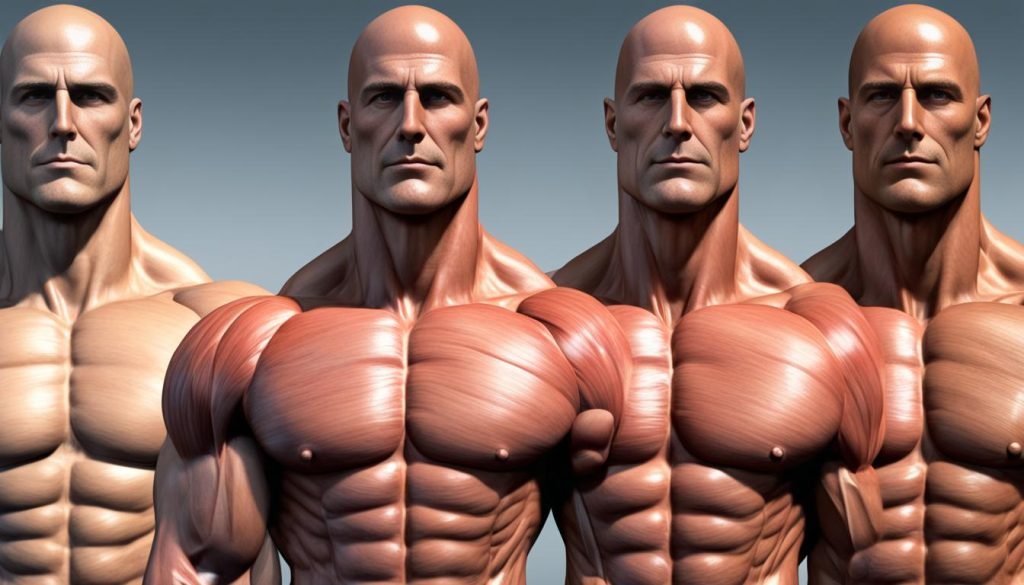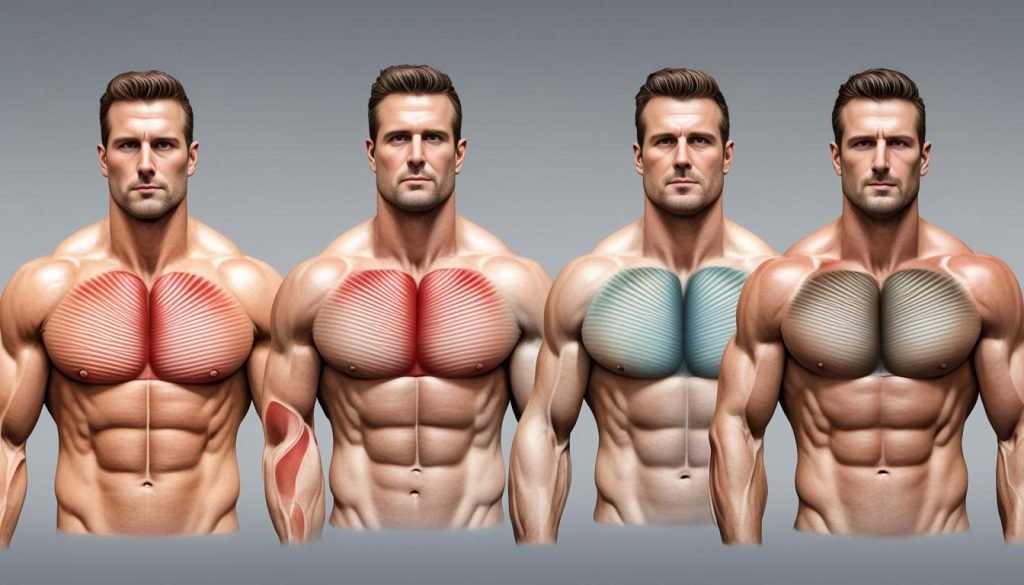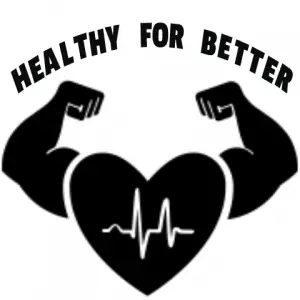Ever wondered why some men have broad chests while others are slimmer? It's all about the different male chest types and what causes these variations. In fitness and bodybuilding, knowing these differences is key for a good workout plan and looking good.
This guide will explore the unique traits of male chest types. We'll see how muscle growth, genes, and lifestyle affect them. Get ready for insights that could change how you see your fitness goals!
Key Takeaways
- Understanding male chest types helps with targeted fitness training.
- Chest anatomy varies with ectomorphic, mesomorphic, and endomorphic shapes.
- Genetics and body fat distribution greatly affect chest looks.
- Customizing your workout to your chest type boosts muscle growth.
- Some myths about male chest types can mislead your training.
Introduction to Male Chest Types
Knowing the different male chest shapes is key for better fitness planning. It helps fitness lovers and bodybuilders focus on the right muscles. This way, they can reach their fitness goals more effectively.
Importance of Understanding Chest Types
Understanding chest types makes you more aware of your body. It leads to more personalized workouts. This means better muscle growth and definition.
It helps focus on specific areas that need work. This is key for achieving the best physical shape.
Overview of Factors Influencing Chest Shapes
Many things affect chest shapes, like genes, body makeup, and exercise habits. Your genes set the base for muscle and fat levels. These are key in shaping your chest.
Your body makeup changes with diet and exercise. Knowing this helps you make fitness plans that fit you best. This way, you can control your fitness journey better.
Chest Types Male: Anatomy and Variability
Exploring chest types means looking closely at chest anatomy and how muscles grow. Every person's chest muscles are different, affecting how they look and work. The main muscle for push movements, the pectoralis major, has several parts. These include the clavicular head for incline lifts and the sternocostal head for flat bench exercises.
Pectoral Muscle Development
How the chest muscles grow is shaped by genes, workouts, and diet. People grow their chest muscles in different ways because of muscle fiber and attachment points. Knowing these differences helps tailor training to meet personal goals. For example, some might do compound lifts for a full chest workout, while others might focus on upper chest exercises.
Chest Anatomy Variations
There are many ways chest anatomy can vary, affecting training and routines. Muscle fiber orientation affects both looks and function. To develop upper body muscles well, it's key to understand these differences. Things like posture, past injuries, and body shape also play a role in muscle development. This knowledge helps create workouts that fit each person's unique body.

Common Male Chest Shapes and Their Characteristics
Male chest shapes vary a lot, depending on their body types. Knowing about ectomorphic, mesomorphic, and endomorphic helps people plan their workouts and diets better. Here's a closer look at the three main chest types.
Ectomorphic Chest Types
Ectomorphic chests are slim and narrow. People with this type often have:
- Thin limbs and limited muscle mass
- Longer torso and legs
- Shoulders that are narrower than the hips
It can be hard for ectomorphs to build muscle and define their chest. But, focusing on strength training and eating more calories can help.
Mesomorphic Chest Types
Mesomorphic chests are well-proportioned and muscular. They are known for:
- Broad shoulders and an athletic build
- Defined muscles with less body fat
- Waist and hips that match well
People with mesomorphic chests do well with strength training. They can quickly see results and build muscle. This makes them great for fitness plans.
Endomorphic Chest Types
Endomorphic chests are stocky, with more body fat. They usually have:
- Wider hips and a bigger waist
- A rounder look overall
- It's harder to lose weight
To shape their chest, endomorphs need to focus on losing fat and strength training. A balanced diet and exercise plan can help them look better.
| Chest Type | Body Characteristics | Recommended Strategy |
|---|---|---|
| Ectomorphic | Narrow shoulders, slim frame | High-calorie diet, strength training |
| Mesomorphic | Broad shoulders, muscular | Regular strength training, fitness variety |
| Endomorphic | Stockier build, higher body fat | Balanced diet, cardio, strength training |
Building Your Ideal Chest Shape
To get an attractive chest shape, you need workouts that target different muscles. Each body type needs specific exercises for the chest to grow well. A good routine should work on the upper, middle, and lower chest for a balanced look.
Exercises for Different Chest Areas
Here are some key exercises for a great chest:
- Bench Press – This move works the whole chest and builds strength.
- Incline Bench Press – Targets the upper chest for more definition.
- Dips – Activates the lower chest for a better shape.
Adding these exercises to your workout helps develop all chest areas evenly.
Combination of Strength Training and Cardio
Pairing muscle building with cardio is key for a better chest look. This combo boosts muscle definition and helps burn fat around the chest. Regular cardio keeps you lean while keeping your muscle, helping you achieve your chest goals.

Understanding Chest Fat Distribution
Learning about chest fat distribution helps us understand fitness and body shape better. Many things affect how fat is stored in the chest, changing how it looks. It's key for those wanting a more defined chest.
Impact of Diet on Chest Definition
Eating right is crucial for a defined chest. A balanced diet helps with chest definition. Foods high in protein build muscle, while healthy fats and carbs give energy for workouts and recovery. Cutting calories but keeping nutrients can reduce chest fat, changing your body's fat percentage.
Common Myths about Chest Fat
Many myths about chest fat mislead people in their fitness journey. One common myth is spot reduction, thinking you can lose fat in one area with certain exercises. But fat loss happens all over the body with a full fitness plan. Knowing these myths helps people choose better workouts and diets for losing chest fat.

Conclusion
In this guide, we've looked at the different male chest types, their anatomy, and features. It's key to know these details if you want to boost your fitness. Knowing about chest types helps you understand what to aim for and how to train and eat to get there.
The role of chest training is huge. It's vital to have workouts that fit your body type for the best results. Knowing your chest shape helps you pick the right exercises, making each workout count.
Getting fit is a personal journey, shaped by your goals and dreams. Using what you've learned about chest types and training can help you improve and reach your fitness goals. With the right approach, you can build the chest you've always wanted.
FAQ
What are the different male chest types?
Men have different chest types like ectomorphic, mesomorphic, and endomorphic. Each type shows unique features like shoulder size, muscle mass, and body fat levels.
Why is it important to understand my chest anatomy variations?
Knowing how your chest muscles work helps you pick the right exercises. This way, you can work on specific muscles for better chest muscles.
How can I develop my pectoral muscles effectively?
To build your chest muscles, try exercises like bench press, incline bench press, and dips. These exercises focus on certain muscle fibers in your chest.
Does diet influence chest fat distribution?
Yes, what you eat affects your chest fat. Eating right can help you lose fat and make your chest muscles more visible.
Are there common myths about chest fat I should be aware of?
Many think spot reduction works. But, losing fat overall and doing strength training is key to a better chest look.
How do I choose exercises based on my male chest type?
Pick exercises based on your chest type—ectomorphic, mesomorphic, or endomorphic. Choose routines that work your muscles well. Make sure your workouts include strength and cardio.
Can understanding my chest type enhance my bodybuilding efforts?
Yes! Knowing your chest type helps you tailor your workouts and diet. This can lead to better chest muscle growth and a more attractive upper body.
Source Links
- Male Body Types: Definitions and What They May Mean – https://www.healthline.com/health/male-body-types
- The Anatomy of Your Chest Muscles, Explained (and How to Train Them) | BarBend – https://barbend.com/chest-muscles-anatomy/
- Best Chest Exercises for Men (Upper, Lower, Middle) – https://athleanx.com/articles/the-perfect-chest-workout?srsltid=AfmBOoqWHs-Uwe9pl7BmgJRf4oL7sFpTHTrVZ16VhLZrH5cfnIm0EGl8
Recent Posts
It's important to evaluate whether Beachbody On Demand continues to meet your fitness needs as we enter 2025. With a range of workout programs and nutrition plans, the platform claims to cater to...
Just like having a personal trainer at your fingertips, Beachbody On Demand offers you an extensive library of on-demand workout programs accessible anytime, anywhere. This service allows you to...

